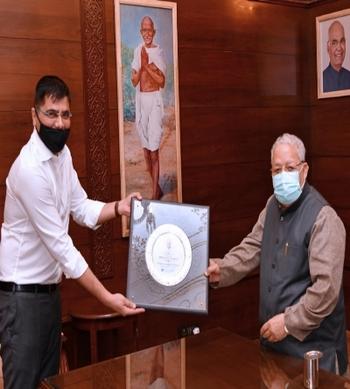CBSE Class 9 Science Syllabus
CBSE Class 9 Science Syllabus 2022-23: The board has issued the CBSE Class 9th Science Syllabus for the upcoming academic session (2022-23). The syllabus has been updated in accordance with the annual assessment process. It is a condensed syllabus, around 30% shorter than that of 2019. As a result, students should go through the entire syllabus and only study the chapters/topics specified in the most recent syllabus. A list of experiments for practical work as well as internal assessment details can be found below. The CBSE Class 9 Science Syllabus 2022-23 can also be downloaded from this page.
Skip to
CBSE Class 9 Science Syllabus 2022-23
CBSE Class 9 Science Course Structure 2022-23:
Annual Examination:
Theory Paper Marks: 80
|
Unit No. |
Unit |
Marks |
|
1 |
Matter - Its Nature and Behaviour |
25 |
|
2 |
Organization in the living world |
22 |
|
3 |
Motion, force and work |
27 |
|
4 |
Food, Food Production |
06 |
|
TOTAL |
80 |
Download CBSE Class 9 Science Course Structure 2022-23:
Theme: Materials
Unit 1: Matter-Nature and Behaviour
Definition of matter; solid, liquid and gas; characteristics - shape, volume, density; change of statemelting (absorption of heat), freezing, evaporation (cooling by evaporation), condensation, sublimation.
Nature of matter: Elements, compounds and mixtures. Heterogeneous and homogenous mixtures, colloids and suspensions. Physical and chemical changes (excluding separating the components of a mixture).
Particle nature and their basic units: Atoms and molecules, Law of Chemical Combination, Chemical formula of common compounds, Atomic and molecular masses.
Structure of atoms: Electrons, protons and neutrons, Valency, Atomic Number and Mass Number, Isotopes and Isobars.
Theme: The World of the Living
Unit 2: Organization in the Living World
Cell - Basic Unit of life: Cell as a basic unit of life; prokaryotic and eukaryotic cells, multicellular organisms; cell membrane and cell wall, cell organelles and cell inclusions; chloroplast, mitochondria, vacuoles, endoplasmic reticulum, Golgi apparatus; nucleus, chromosomes - basic structure, number.
Tissues, Organs, Organ System, Organism: Structure and functions of animal and plant tissues (only four types of tissues in animals; Meristematic and Permanent tissues in plants).
Theme: Moving Things, People and Ideas
Unit 3: Motion, Force and Work
Motion: Distance and displacement, velocity; uniform and non-uniform motion along a straight line; acceleration, distance-time and velocity-time graphs for uniform motion and uniformly accelerated motion, elementary idea of uniform circular motion.
Force and Newton’s laws: Force and Motion, Newton’s Laws of Motion, Action and Reaction forces, Inertia of a body, Inertia and mass, Momentum, Force and Acceleration.
Gravitation: Gravitation; Universal Law of Gravitation, Force of Gravitation of the earth (gravity), Acceleration due to Gravity; Mass and Weight; Free fall. Floatation: Thrust and Pressure. Archimedes’ Principle; Buoyancy.
Work, Energy and Power: Work done by a Force, Energy, power; Kinetic and Potential energy; Law of conservation of energy (excluding commercial unit of Energy).
Sound: Nature of sound and its propagation in various media, speed of sound, range of hearing in humans; ultrasound; reflection of sound; echo.
Theme: Food
Unit 4: Food Production
Plant and animal breeding and selection for quality improvement and management; Use of fertilizers and manures; Protection from pests and diseases; Organic farming.
Conclusion
The Class 9 syllabus of the Central Board of Secondary Education (CBSE) covers a wide range of subjects and topics that provide a strong foundation for further education. It aims to promote critical thinking, analytical skills, and comprehensive knowledge in students. The syllabus is designed to be interactive and engaging, encouraging students to develop a deep understanding of the subjects and apply their learning to real-life situations. By successfully completing the Class 9 syllabus, students will be prepared for the challenges of higher classes and have a solid academic base.
FAQs
1.What subjects are included in the CBSE Class 9 syllabus?
The CBSE Class 9 syllabus includes subjects like Mathematics, Science, Social Science, English, Hindi, and a third language (such as Sanskrit, French, etc.), along with additional subjects like Computer Science, Physical Education, and others
2.How is the CBSE Class 9 syllabus structured?
The syllabus is divided into different subjects, each containing specific units and chapters. It provides a comprehensive overview of the topics to be covered, along with the weightage assigned to each unit in the examinations.
3.Is it necessary to study all the subjects in Class 9?
Yes, it is recommended to study all the subjects as they form an essential part of the overall curriculum. Each subject contributes to the holistic development of the student.
4.How can I effectively prepare for the CBSE Class 9 examinations?
To prepare effectively, create a study schedule, understand the concepts thoroughly, practice sample papers and previous year question papers, seek clarification from teachers when needed, and engage in regular revision.
Download CBSE Class 9th Science Syllabus PDF

MissionGyan Team
We aim to eradicate the education gap and serve equal and free education to all with the help of skilled and expert volunteers and teachers.





